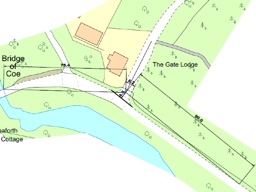Junction assessments require evaluation of characteristics of junctions.
This may encompass:
- Visibility assessment
- Swept path analysis
- Traffic capacity evaluation
In order for priority junctions to operate safely, vehicles entering the junction from minor arms (those which have to give way to approaching traffic) need to have sufficient visibility along the approaching road, to see vehicles travelling towards the junction.
Visibility requirements are dependant on the speed of approaching traffic. For obvious reasons, vehicles approaching at high speed would take longer to react to a vehicle emerging into the junction. Similarly, if traffic is likely to be approaching the junction at high speed, a 'safe gap' to emerge into the junction woud be longer for high speed traffic, than for low speed traffic.
The swept path of vehicles may need to be tested for junctions or roadways which are limited in terms of width or turning angles required. Common examples are requirements to check that refuse vehicles or emergency vehicles can access a development safely and easily, without the need for excess manouvering. Swept path analysis takes into account the track of the vehicle wheels and the swept path of any overhanging parts of the vehicle.


